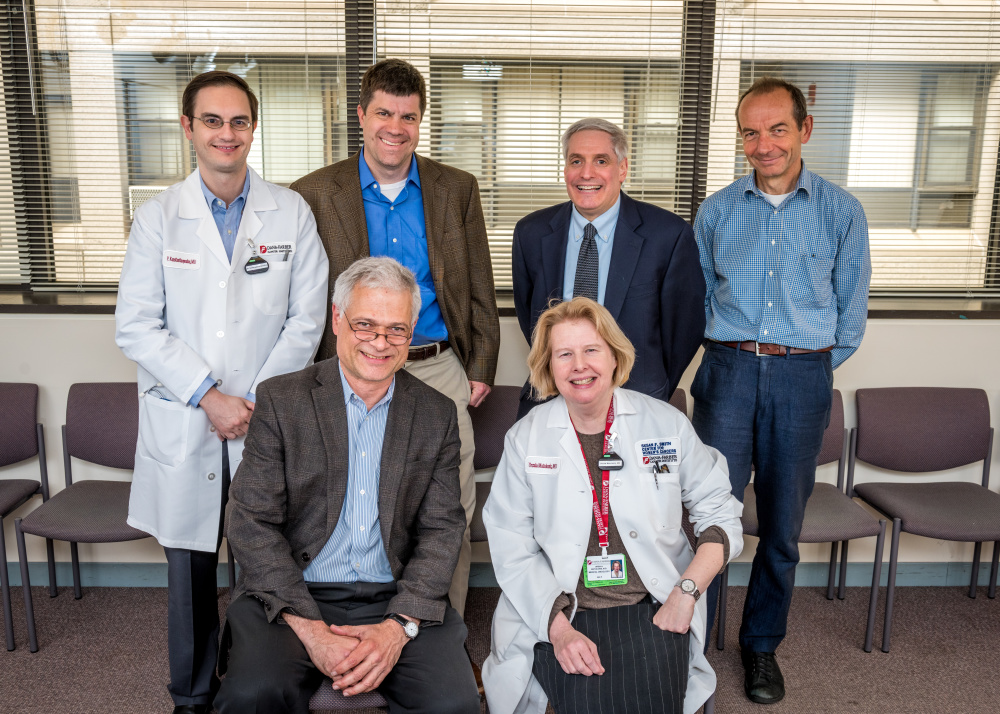
For women who inherit a breast and ovarian cancer susceptibility gene like mutant BRCA-1 or BRCA-2, the risk of ovarian and tubal cancers begins to rise significantly at age 40 to 45. Women at this age — and younger — are often advised to have their ovaries and tubes removed as a risk-reducing strategy for this cancer.
It can be a difficult tradeoff. Removal of the estrogen-producing ovaries triggers premature menopause, a sudden hormonal shift that can cause uncomfortable symptoms and lessen sexual satisfaction; it also may contribute to osteoporosis, heart disease, and Alzheimer’s disease.
However, in just the past few years, research has begun to examine the safety and efficacy of a new option: a two-step surgery in which the fallopian tubes are removed sometime before age 40, after a woman has finished having children, allowing the ovaries continue to function for some additional number of years, when they are removed in a second operation.
A clinical trial of this two-stage procedure is under way at the Susan F. Smith Center for Women’s Cancers. The study, called WISP (Women Choosing Surgical Prevention), is designed to assess sexual function and quality of life among women who delay ovary removal compared with women who have their ovaries and fallopian tubes removed in one operation. The WISP trial is being led at the Susan F. Smith Center by Neil Horowitz, MD, of the gynecologic oncology group.
Learn More:
The strategy is based on research suggesting that the most dangerous form of ovarian cancer actually develops not in the ovaries, but within the fallopian tubes – the narrow structures that funnel eggs from the ovaries to the uterus.
Removing the fallopian tubes first (when fertility is no longer desired) when the risk of tubal or ovarian cancer is still very low, may reduce the overall risk by as much as 65 percent, according to Colleen Feltmate, MD, director of Minimally Invasive Gynecologic Oncology in the Susan F. Smith Center. This option “is applicable to women who are younger than 40 or 45 and would like to maintain their own hormonal function until their ovarian cancer risk goes up,” says Feltmate.
The multi-center trial is funded by a Stand Up To Cancer (SU2C) grant to an ovarian cancer “Dream Team” of researchers led by Alan D’Andrea, MD, director of the Susan F. Smith Center. Theirs is the first Stand Up To Cancer project with a component dedicated to ovarian cancer prevention.
D’Andrea says that his team’s motivation to organize the trial was fueled in part by ovarian cancer patient advocates. The plan is to enroll 270 women in the trial at the multiple centers where it’s being carried out. Recently he said that 48 women had enrolled, with 21 choosing to have the delayed ovary removal and 27 opting to have ovaries and tubes removed simultaneously.
Judy Garber, MD, MPH, director of the Center for Cancer Genetics and Prevention, says that women who want to do the most that they can do to avoid ovarian cancer should have their ovaries and tubes surgically removed, but adds that the procedure in this study can be another good option.
“It is certainly appealing, but given how effective removal of both ovaries and tubes are in reducing ovarian cancer risk, it is important to prove that the two-step strategy is safe and similarly effective,” Garber says. “But for women at high risk who are not ready to have their ovaries out early, the delayed ovary removal procedure is an option that may be effective and will not cause sudden menopause,” Garber says.
She stresses that the study is not designed to show whether postponing ovary removal by five years results in more ovarian cancers or not; rather, the goal is to assess the pros and cons of the option from the quality of life standpoint.
“The main value is to call attention to the option and the issues it raises,” she says.
